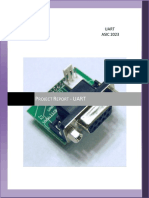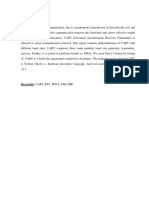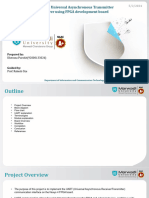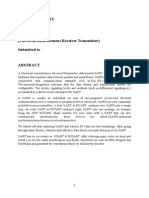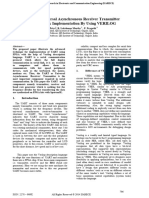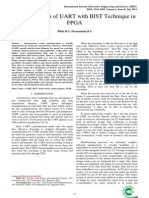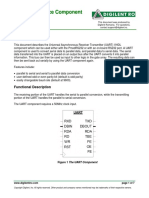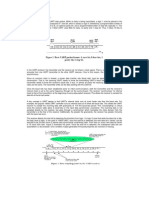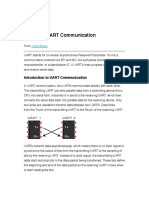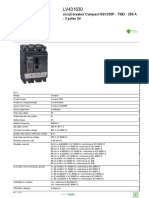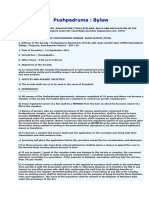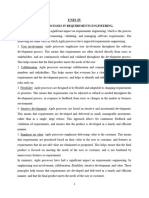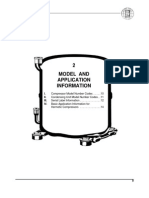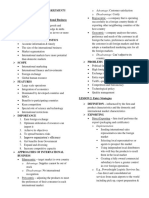0% found this document useful (0 votes)
314 views7 pagesDesign and Implementation of UART Based On Verilog
This document summarizes a research paper that designed and implemented a Universal Asynchronous Receiver/Transmitter (UART) using Verilog HDL. The design divided the UART into transmitting and receiving modules. It described the operational principles of UART, including data frame formats, module functions, and timing diagrams. Code and comments were provided for the transmitting module. The experimental results showed the transmitting and receiving modules worked as expected, demonstrating the feasibility of the design approach for full-duplex serial communication.
Uploaded by
labibatariqueCopyright
© © All Rights Reserved
We take content rights seriously. If you suspect this is your content, claim it here.
Available Formats
Download as PDF, TXT or read online on Scribd
0% found this document useful (0 votes)
314 views7 pagesDesign and Implementation of UART Based On Verilog
This document summarizes a research paper that designed and implemented a Universal Asynchronous Receiver/Transmitter (UART) using Verilog HDL. The design divided the UART into transmitting and receiving modules. It described the operational principles of UART, including data frame formats, module functions, and timing diagrams. Code and comments were provided for the transmitting module. The experimental results showed the transmitting and receiving modules worked as expected, demonstrating the feasibility of the design approach for full-duplex serial communication.
Uploaded by
labibatariqueCopyright
© © All Rights Reserved
We take content rights seriously. If you suspect this is your content, claim it here.
Available Formats
Download as PDF, TXT or read online on Scribd
/ 7











